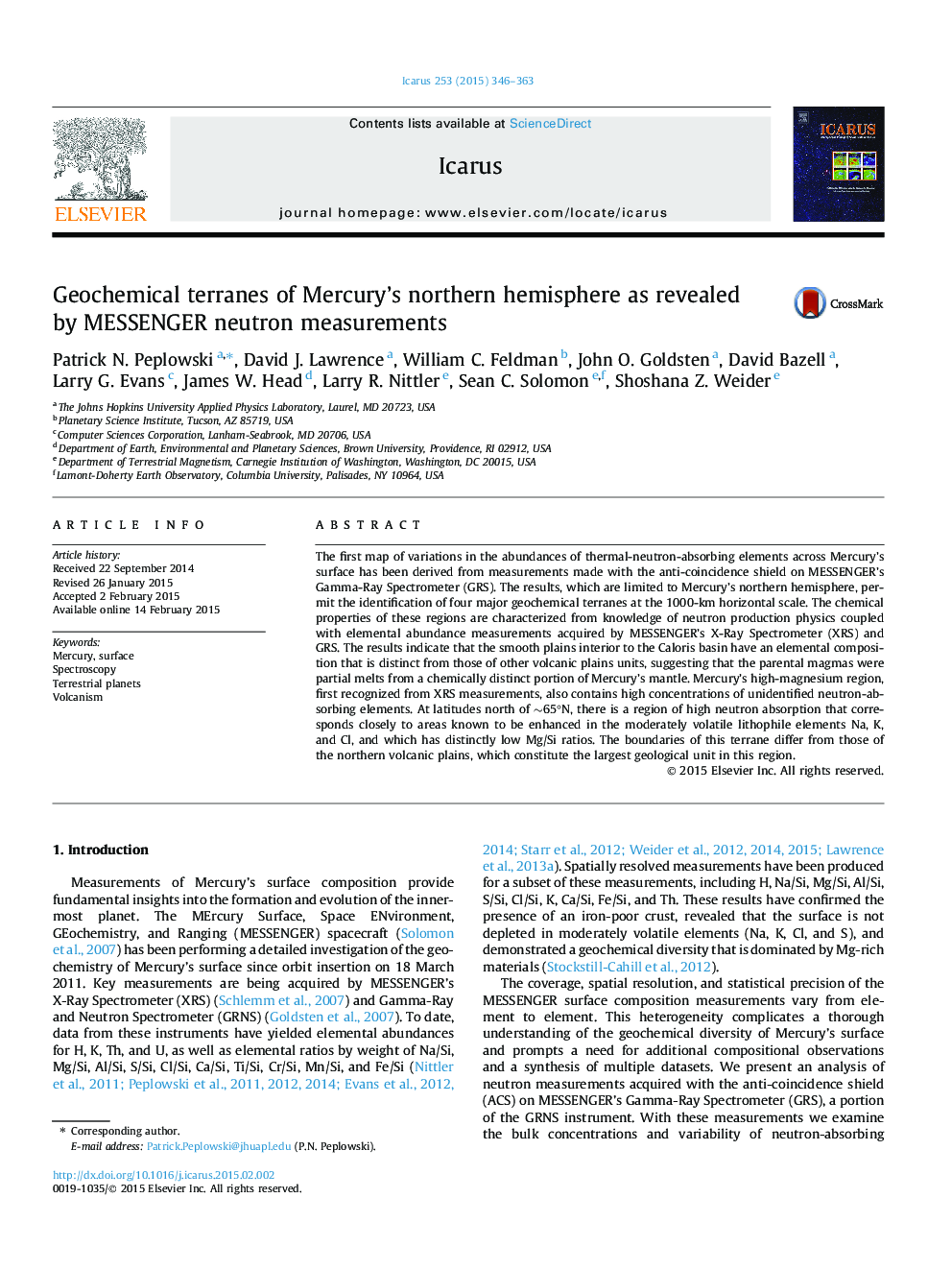| Article ID | Journal | Published Year | Pages | File Type |
|---|---|---|---|---|
| 8136539 | Icarus | 2015 | 18 Pages |
Abstract
The first map of variations in the abundances of thermal-neutron-absorbing elements across Mercury's surface has been derived from measurements made with the anti-coincidence shield on MESSENGER's Gamma-Ray Spectrometer (GRS). The results, which are limited to Mercury's northern hemisphere, permit the identification of four major geochemical terranes at the 1000-km horizontal scale. The chemical properties of these regions are characterized from knowledge of neutron production physics coupled with elemental abundance measurements acquired by MESSENGER's X-Ray Spectrometer (XRS) and GRS. The results indicate that the smooth plains interior to the Caloris basin have an elemental composition that is distinct from those of other volcanic plains units, suggesting that the parental magmas were partial melts from a chemically distinct portion of Mercury's mantle. Mercury's high-magnesium region, first recognized from XRS measurements, also contains high concentrations of unidentified neutron-absorbing elements. At latitudes north of â¼65°N, there is a region of high neutron absorption that corresponds closely to areas known to be enhanced in the moderately volatile lithophile elements Na, K, and Cl, and which has distinctly low Mg/Si ratios. The boundaries of this terrane differ from those of the northern volcanic plains, which constitute the largest geological unit in this region.
Related Topics
Physical Sciences and Engineering
Earth and Planetary Sciences
Space and Planetary Science
Authors
Patrick N. Peplowski, David J. Lawrence, William C. Feldman, John O. Goldsten, David Bazell, Larry G. Evans, James W. Head, Larry R. Nittler, Sean C. Solomon, Shoshana Z. Weider,
